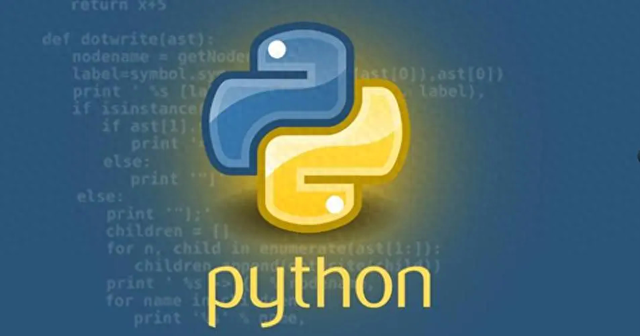
大家好,今天为大家分享一个神奇的 Python 库 - IntelliScraper。
Github地址:https://github.com/herche-jane/IntelliScraper
在当今信息爆炸的时代,从网络上获取和分析数据是许多应用程序和业务的核心需求之一。Python IntelliScraper 库就是一款为解决这类问题而设计的强大工具。本文将详细介绍 IntelliScraper 库的功能、用法和示例代码,帮助大家深入了解如何利用这个库来实现智能的网络数据提取。
什么是 Python IntelliScraper?Python IntelliScraper 是一个用于从网页中提取数据的 Python 库。它提供了简单而强大的 API,使得用户可以轻松地定义抓取规则并从网页中提取所需的数据。IntelliScraper 使用了最新的 Web 解析技术和机器学习算法,能够智能地识别网页结构并提取目标数据,同时还提供了强大的数据清洗和转换功能。
安装 IntelliScraper要开始使用 IntelliScraper,首先需要安装它。
可以通过 pip 来安装 IntelliScraper:
pip install intelliscraper安装完成后,就可以开始使用 IntelliScraper 库了。
基本用法定义抓取规则在 IntelliScraper 中,可以通过定义抓取规则来告诉库如何从网页中提取数据。规则通常包括网页 URL、要提取的数据字段和对应的 XPath 表达式。
下面是一个简单的示例:
from intelliscraper import Scraper, Rule# Define a rulerule = Rule( url="https://example.com", fields={ "title": "//h1/text()", "content": "//div[@class='content']/text()" })在这个示例中,定义了一个抓取规则,指定了要抓取的网页 URL 和要提取的数据字段及其对应的 XPath 表达式。
执行抓取任务一旦定义了抓取规则,就可以使用 Scraper 对象执行抓取任务了。
下面是一个示例:
# Create a Scraper objectscraper = Scraper()# Execute the scraping taskresult = scraper.scrape(rule)在这个示例中,创建了一个 Scraper 对象,并调用了 scrape 方法来执行抓取任务。抓取结果将会以字典的形式返回。
处理抓取结果一旦完成抓取任务,就可以对抓取结果进行处理了。可以将结果保存到数据库、导出为 CSV 文件等。
下面是一个示例:
# Process the scraping resultfor item in result: print(item["title"]) print(item["content"]) print("-" * 50)在这个示例中,遍历了抓取结果,并输出了每个字段的值。
高级功能数据清洗与转换IntelliScraper 允许用户对抓取的数据进行清洗和转换,以便更好地满足业务需求。可以使用过滤器、正则表达式、自定义函数等来对数据进行处理。
下面是一个示例:
# Clean and transform the scraping resultfor item in result: # Clean up the content by removing extra spaces and newlines item["content"] = item["content"].strip() # Convert the title to lowercase item["title"] = item["title"].lower()在这个示例中,对抓取的内容进行了清洗和转换,去除了额外的空格和换行符,并将标题转换为小写。
自定义解析器如果默认的解析器无法满足需求,用户还可以编写自定义解析器来处理特定的网页结构或数据格式。
下面是一个示例:
from intelliscraper import Parser# Define a custom parserclass CustomParser(Parser): def parse(self, response): # Custom parsing logic pass# Use the custom parserscraper = Scraper(parser=CustomParser())在这个示例中,定义了一个名为 CustomParser 的自定义解析器,并将其传递给 Scraper 对象。
并发抓取在处理大量数据时,提高抓取效率是非常重要的。IntelliScraper 提供了并发抓取功能,可以同时发起多个抓取请求,加速数据提取过程。
下面是一个示例:
from intelliscraper import Scraper, Rule# Define multiple rulesrules = [ Rule(url="https://example.com/page1"), Rule(url="https://example.com/page2"), Rule(url="https://example.com/page3"), # Add more rules as needed]# Create a Scraper object with concurrent mode enabledscraper = Scraper(concurrent=True)# Execute concurrent scraping tasksresults = scraper.scrape(rules)在这个示例中,定义了多个抓取规则,并创建了一个启用了并发模式的 Scraper 对象,然后执行了并发抓取任务。
分布式抓取对于大规模的数据提取任务,分布式抓取是一个更好的选择,可以利用多台计算机的资源来加速数据提取过程。IntelliScraper 支持分布式抓取,用户可以使用分布式任务队列来管理和协调抓取任务。
下面是一个示例:
from intelliscraper import DistributedScraper, Rule# Define multiple rulesrules = [ Rule(url="https://example.com/page1"), Rule(url="https://example.com/page2"), Rule(url="https://example.com/page3"), # Add more rules as needed]# Create a DistributedScraper objectscraper = DistributedScraper()# Execute distributed scraping tasksresults = scraper.scrape(rules)在这个示例中,使用了 DistributedScraper 对象来执行分布式抓取任务。
案例分析:抓取电子商务网站产品信息假设需要从一个电子商务网站上抓取产品信息,包括产品名称、价格、描述等。可以使用 IntelliScraper 来实现这个任务。
from intelliscraper import Scraper, Rule# Define a rule for scraping product informationrule = Rule( url="https://example.com/products", fields={ "name": "//div[@class='product']/h2/text()", "price": "//div[@class='product']/span[@class='price']/text()", "description": "//div[@class='product']/p/text()" })# Create a Scraper objectscraper = Scraper()# Execute scraping taskproducts = scraper.scrape(rule)# Process scraping resultfor product in products: print("Name:", product["name"]) print("Price:", product["price"]) print("Description:", product["description"]) print("-" * 50)在这个案例中,定义了一个抓取规则,然后使用 Scraper 对象执行抓取任务,并对抓取结果进行处理。这个示例展示了如何利用 IntelliScraper 来从电子商务网站上抓取产品信息。
总结Python IntelliScraper 库为用户提供了一个强大而灵活的工具,用于实现智能网络数据提取。通过本文的介绍,大家可以了解到 IntelliScraper 的基本用法、高级功能以及如何应用到实际的数据提取任务中。如果需要从网页中提取数据,不妨尝试使用 IntelliScraper 来简化和加速这个过程。
